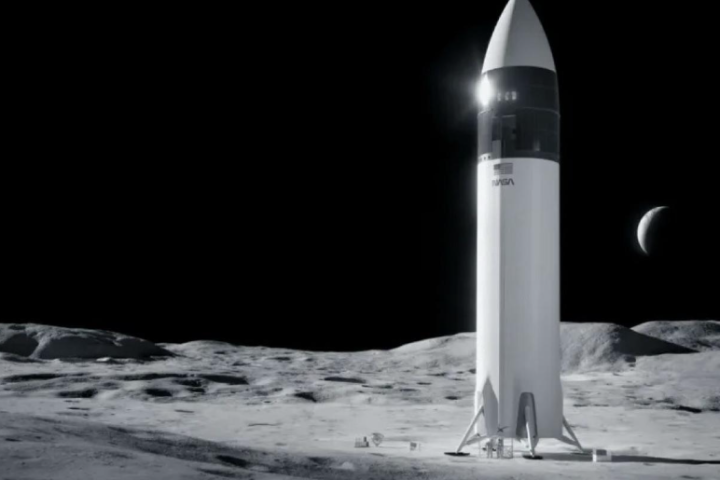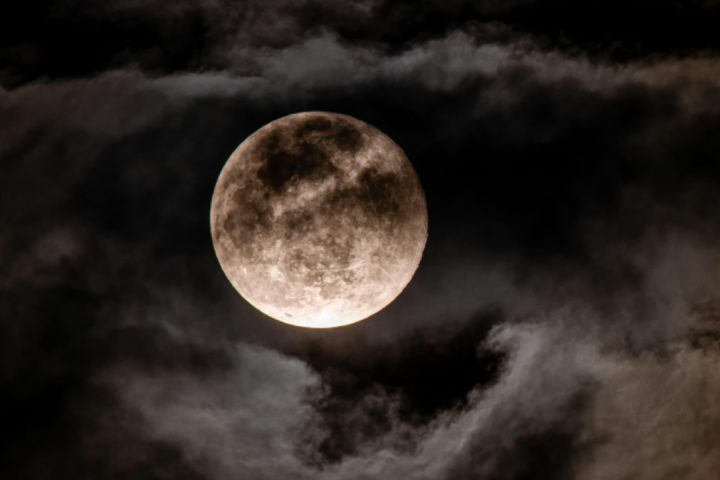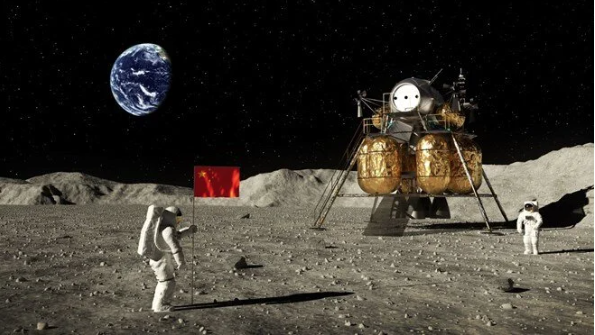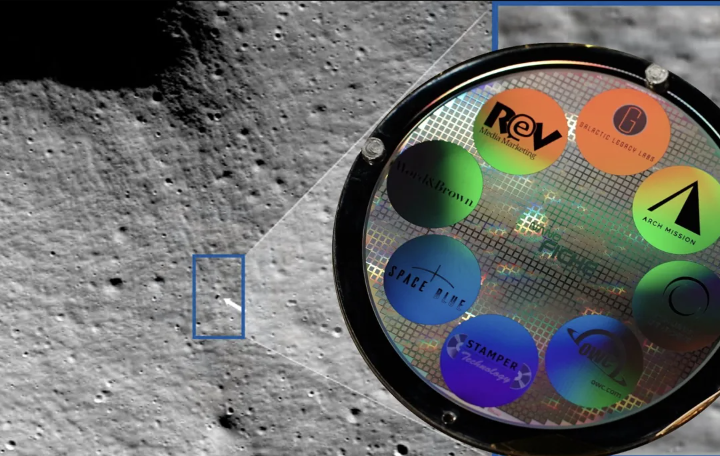The words of the first man on the Moon may be iconic. But the words of the second astronaut are just as iconic.
NASA astronaut Buzz Aldrin, who could not hide his astonishment, said:
“Beautiful, beautiful. A mesmerizing desolation.”
Cold, very cold…
Indeed, the Moon’s powdery surface is a harsh, airless and inhospitable place, a world that ranges from 121°C at its equator to -133°C – NASA has even measured temperatures as low as -246°C in permanently shadowed lunar craters.
But the desolate Moon also holds surprises and secrets yet to be discovered. Here’s a list of curiosities about the Moon’s past, present and future.
Is the Moon moving away from Earth?
Our natural satellite is on average 384,400 kilometers away from us. But it is getting farther and farther away.
“The Moon is slowly moving away from Earth, and this is happening at a rate of 2.5 centimeters per year,” NASA says.
The energy generated by the Earth’s rotation is transferred to the Moon and therefore pushes it farther away. This separation will continue for billions of years to come. So in 5 billion years, when the Sun expands and dies, one day the Moon will be 161,000 kilometers farther away than it is now.

Why are earthquakes happening on the Moon?
The Moon is still shaking and quaking.
Our satellite is experiencing seismic activity, or “moonquakes”. The first recorded one was recorded by seismographs left on the lunar surface by Apollo astronauts. These instruments recorded over 13,000 tremors, and not all of them were mild tremors.
“Some of these earthquakes can be quite strong, some even at 5 on the Richter scale,” said Thomas Watters, senior scientist at the Smithsonian National Air and Space Museum’s Center for Earth and Planetary Studies.
Planetary scientists believe that the Moon, shrinking to one-third the width of the Earth, triggered these earthquakes. NASA explains it this way:
“Just as a grape wrinkles as it turns into a raisin, the Moon gets wrinkles as it shrinks. Unlike the supple skin of a grape, the Moon’s surface crust is brittle. So as the Moon shrinks, this crust breaks and ‘thrust faults’ form, where part of the crust is pushed into the neighboring part.”

Why is moon dust dangerous?
When NASA went to the Moon, the space agency realized that lunar dust was a huge source of problems. It clogged mechanisms, interfered with instruments, caused radiators to overheat and even tore space suits. It could even damage the lungs when inhaled.
Sharon Miller, a research engineer at NASA, says:
“This dust is very fine, abrasive and sharp. It’s like tiny pieces of glass, which makes it more of a dangerous threat than a simple problem.”
And the main reason for this is that the soil and rocks on the lunar surface are not being eroded and smoothed by water and wind, which are not there. So it’s a very harmful environment. NASA is preparing to return to the Moon with the highly successful Artemis program, which launched its first unmanned mission last year. That’s why the Space Agency is working to minimize the damage caused by dust to vehicles, spacesuits, power systems and other instruments that will be traveling to the Moon.
Harrison “Jack” Schmitt, a geologist and one of the astronauts on the Apollo 17 mission, said: “Dust will continue to be an environmental issue for future missions, both for interior and exterior habitats.”
What did the astronauts leave on the Moon?
The Moon is both a museum and a garbage dump. Human explorers have left various objects on the lunar surface, often out of necessity. Here are some of them:
Human waste: 96 bags of human feces per month.
- Human ashes: In 1999, NASA’s Lunar Prospector probe carried the ashes of renowned astronomer Eugene M.
- Shoemaker to the Moon in a protected capsule. Eugene Shoemaker’s wife, astronomer Carolyn Shoemaker, remembers him with these words: “When we look at the Moon, we will always know Gene was there.”
- Golf balls: No, we didn’t make that up. Astronaut Alan Shepard took some golf balls to the Moon and shot them from the lunar surface.
- Hammer – Feather drop experiment: Apollo 15 commander David Scott dropped a hammer and a feather simultaneously from the same height onto the lunar surface live on TV in 1971. NASA’s explanation is as follows: “Because they were essentially in a vacuum, there was no air resistance. This meant that the feather and hammer hit the surface at the same time, just as Galileo had done hundreds of years earlier. All objects released together fall at the same time, regardless of mass.”
How did pieces of the Moon get stuck in the Earth?
Inside the Earth are two giant masses of rock made of different elements than the rest of the Earth. Scientists think they were caused by a violent collision – the same collision that created the Moon.
Geologists think that an object called “Theia”, then a smaller planet, collided with the young Earth. The Earth absorbed most of Theia and the rest of it formed our moon, which we now call the Moon.
Professor Ed Garnero, from Arizona State University’s School of Earth and Space Exploration, said:
“The fragments inside the Earth are the remnants of a planetary collision that led to the formation of our Moon. In other words, the giant fragments found deep inside the Earth, beneath our feet, come from extraterrestrials!”
This is a condensed version of Mark Kaufmann’s article





